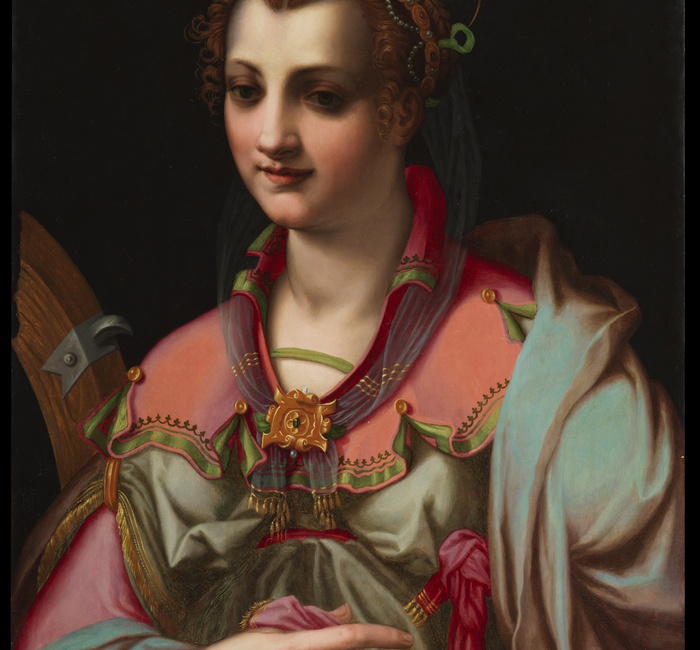
The Crocker Art Museum in Sacramento, California has aqcuired Saint Catherine of Alexandria by Francesco Morandini. Morandini, called Il Poppi for his native town, settled at an early age in Florence and became a student of Giorgio Vasari, with whom he worked closely from his first years as a painter until the mid-1570s. Poppi’s contributions to the famed Studiolo of Francesco I, Alexander and Campaspe (1571) and The Golden Age (1572), reveal his own highly inventive and extravagant maniera mode, characterized by brilliant colorism, extreme preciosity, eccentricities of form, and complex patterns of composition and light, also evident in this beautiful picture of Saint Catherine, created around the same date.
The painting is one of a group of half-length female saints, with variations, that Poppi painted in the 1570s, all of which clearly use the same model. Poppi painted Saint Helena (Walters Art Gallery, Baltimore) and another version of Saint Catherine of Alexandria (Snite Museum of Art, University of Notre Dame, Indiana), as well as a reduced version of the present work. Although strongly influenced by the art of Giovanni Battista Naldini, with whom Poppi trained in Vasari’s studio, his latter works, like the present one, also reflect the mannerism of Agnolo Bronzino, whose acidic colors and distinctive flesh tones seem particularly influential in the vivid green and pink costume here, as well as in the delicate modelling of the round face.
The elaborate headdress and slightly masculine features reveal the artist’s study of Michelangelo’s “teste divine”, as they were called by Vasari. These were greatly admired in sixteenth-century Florence for their beauty, and the delicate sfumato technique around the sitter’s face and neck further attests to the influence of Michelangelo and the Florentine Renaissance upon the artist. The success of Poppi’s composition also speaks to a demand amongst the Florentine elite of his era for images of female saints which, in domestic settings, could serve as role models for secular young women. This lovely image of the sumptuously costumed Saint Catherine, a princess of Alexandria renowned for her faith and learning, would have been a most suitable and aspirational mirror for the pious activities of the daughters and young wives of a noble Florentine house.